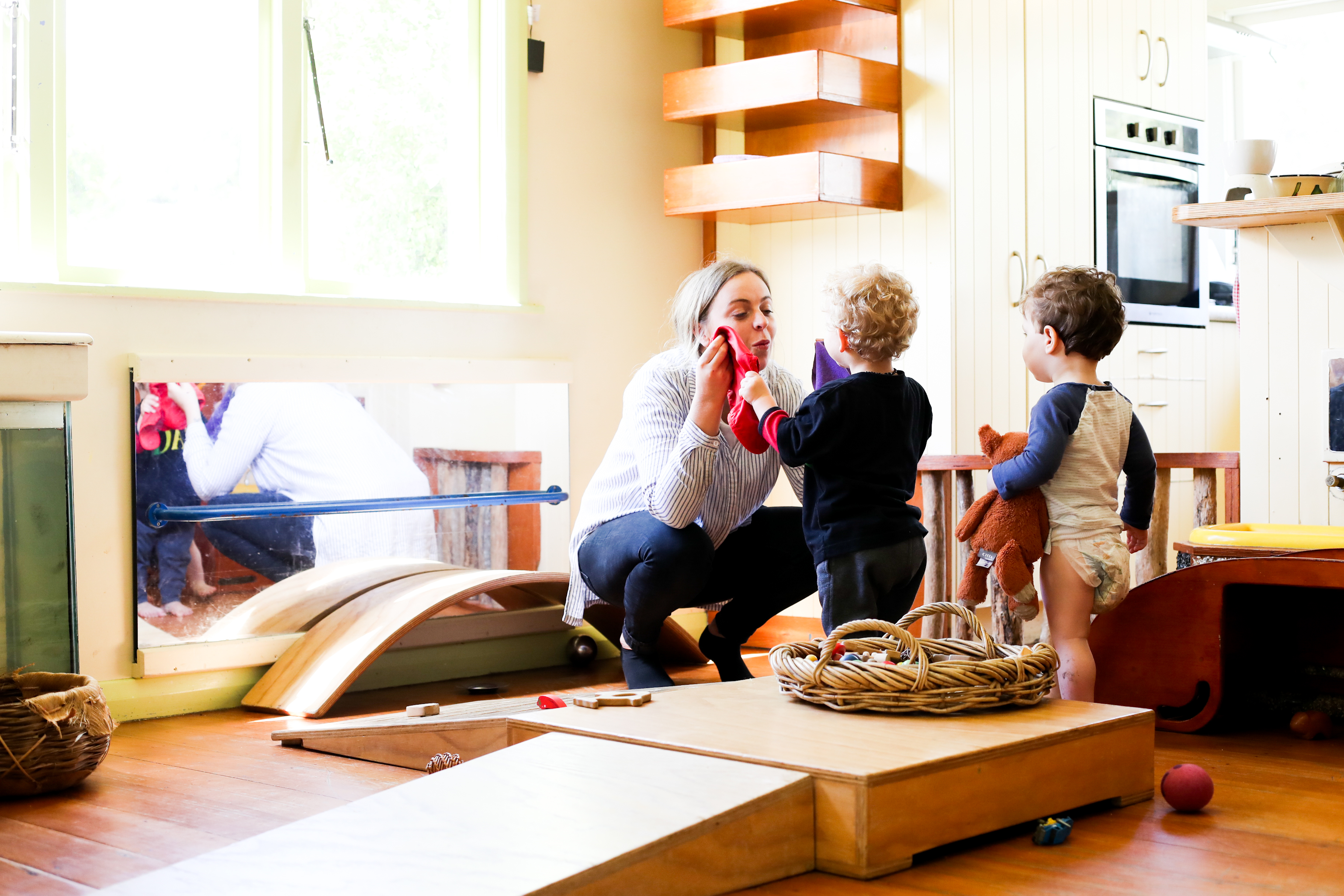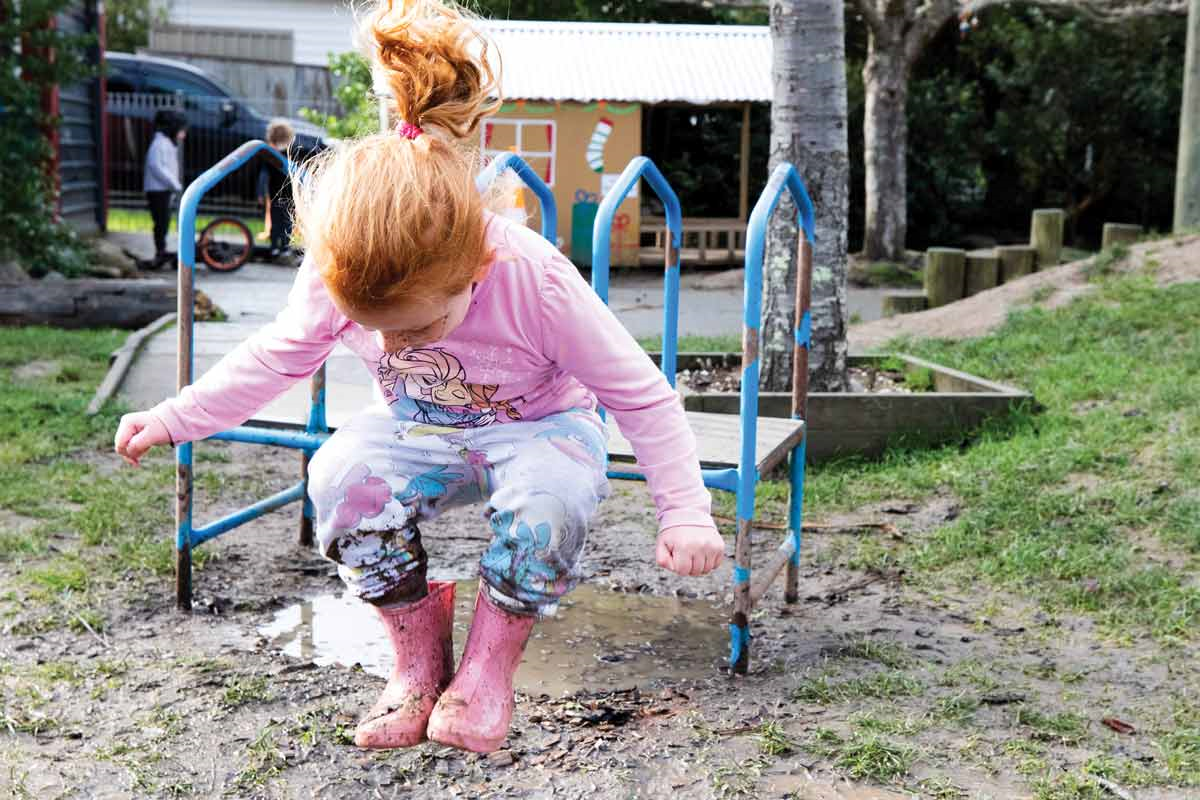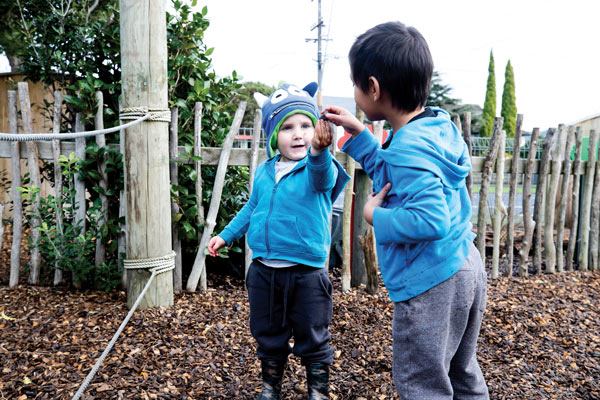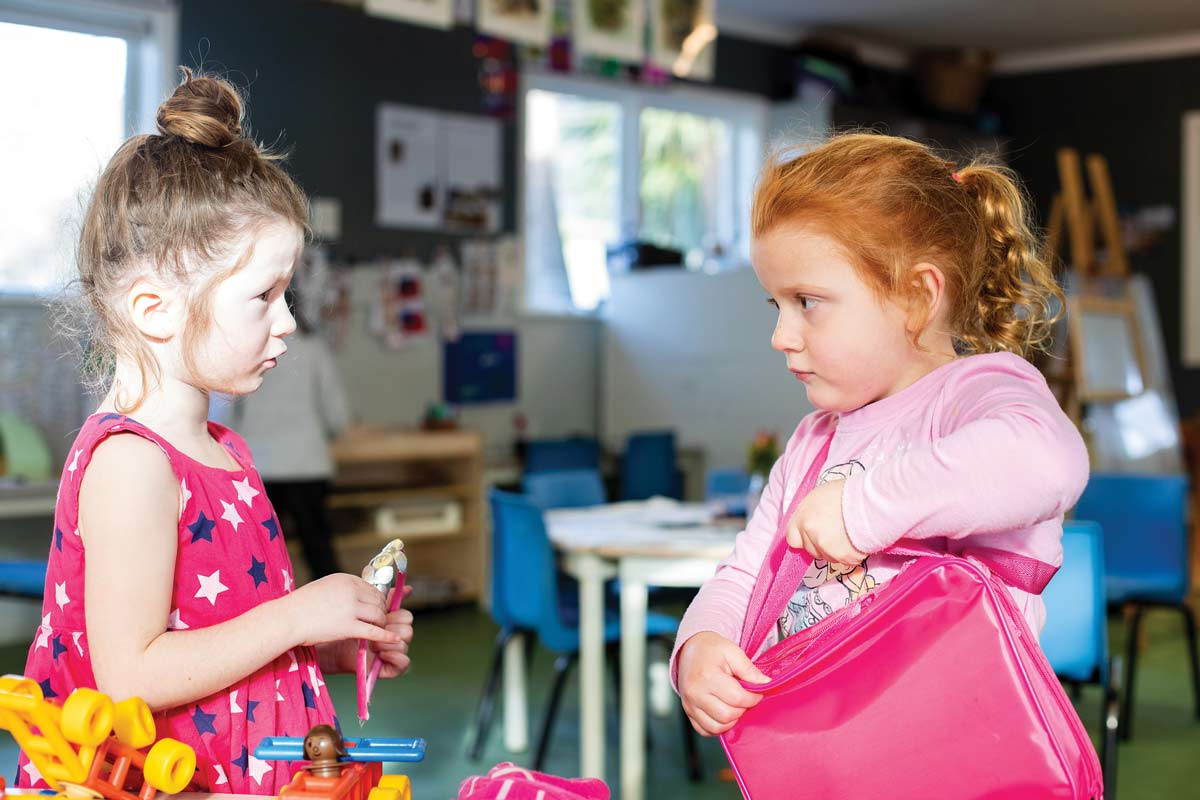He Māpuna te Tamaiti
This resource is to help kaiako with supporting social and emotional competence in early learning.

He Māpuna te Tamaiti – Supporting social and emotional competence in early learning
He Māpuna te Tamaiti is a resource designed for kaiako in early learning settings. It promotes proactive, intentional approaches to supporting the development of children's social and emotional competence. The book comes with a set of cards for use in daily practice and during professional learning conversations.
See Materials that come with this resource to download He Māpuna te Tamaiti: Supporting Social and Emotional Competence in Early Learning (.pdf).
Copies of He Māpuna te Tamaiti may be ordered from Down the Back of the Chair.
Note: To bring it up in the search on the site, either search for the code MOE69778 or the title without the macron.
- Email [email protected]
- Freephone 0800 660 662
Content from page 7 of He Māpuna te Tamaiti.
This resource has been written for kaiako in New Zealand early learning services.1 Its purpose is to support you to understand and draw on effective practices that enhance children’s social and emotional competence, engagement, and learning. Much of this resource will confirm and reinforce your existing practice, but it may also help you to further develop in areas you would like to strengthen. Professional development facilitators will also find it useful in their work with kaiako and early learning services.
The resource is structured around a framework underpinned by Te Whāriki and is organised around four major sections based on key pedagogical approaches promoted by Te Whāriki. Each section discusses a range of strategies shown to be effective by research in New Zealand and overseas.
The resource recommends strategies that provide a good foundation of support and guidance for all children. Children with complex needs or significant challenging behaviour will benefit from these inclusive, universal strategies but may also need a more intensive, personalised approach. In addition, you as their kaiako may benefit from external support – for example, from a Ministry of Education early intervention teacher.
1 Note that there is a companion document for primary and secondary schools, Teaching for Positive Behaviour.
Using this resource
The resource is designed for you to dip in and out of, with key messages revisited in different ways throughout. It supports ongoing use and learning over time. Hence, it also includes activities to support your professional learning and has links to further information, including websites, video clips, and books that are on this webpage.
You may wish to use the self-assessment tool on pages 100–104 of the book as a starting point for identifying areas to focus on. This will help you select sections and strategies that are of particular relevance for you or your kaiako team.
Sections 5: Understanding behaviour and Section 6: Reflection, inquiry, and problem solving, and the activities in sections 1–4 will be particularly useful when your kaiako team is working together to build your knowledge and expertise. In this way, your use of the resource will align with the approach you take to whole-centre inquiry and collaborative problem solving – adopting a reflective, inquiring frame of mind to ensure all your tamariki are engaged and learning in an inclusive community.
About the title
The title of this resource, He Māpuna te Tamaiti, can be translated as “Each child is precious and unique.” It comes from a model of holistic human development and learning developed by Waiariki Grace (2005) and encapsulates ideas of nurturing and growth.

Content from page 33 of He Māpuna te Tamaiti.
A positive early learning environment is welcoming and inclusive, with strong reciprocal relationships between kaiako, tamariki, and whānau. A respectful, friendly tone between adults makes an important contribution to such an environment.
In a positive, inclusive environment, children can practise their social and emotional skills, take risks, and test boundaries, knowing that the adults will be consistently calm and caring.
Values should be regularly reviewed to ensure they reflect a bicultural approach and respond to the diversity of the community.
Values, expectations, and routines should be clear, consistent, and easy for everyone to understand and follow. This helps young children to manage their day and prepare for what is going to happen next.
The design of the physical environment should minimise barriers to play and learning for children and to participation by whānau.
Effective strategies for creating a supportive environment
Establishing a positive climate
- Fostering warm and caring relationships with children.
- Using a friendly tone and providing positive attention to all children.
- Ensuring arriving and leaving routines are personalised, pleasant, and unhurried.
Constructing values
- Co-constructing values with whānau and displaying them.
- Talking with children about values and how they are expressed.
Developing and promoting expectations and routines
- Co-constructing and displaying expectations and routines.
- Teaching expectations and routines using intentional pedagogies.
- Giving children positive feedback in relation to expectations and routines.
Creating a safe and inclusive space
- Ensuring the physical space is welcoming for children and whānau.
- Organising and displaying resources to make it easy to access and share them.
- Ensuring visual images, resources, and signage reflect and celebrate cultural diversity.
- Teaching children to use space and resources responsibly.

Content from page 49 of He Māpuna te Tamaiti.
Emotional competence includes understanding what we and others are feeling. It also includes having strategies to manage and express our feelings in appropriate ways and to calm ourselves when needed.
Thinking aloud, modelling, and role play are all good practices for supporting children to understand and manage their emotions.
We help children to develop emotional competence by acknowledging and talking about feelings and preparing them for situations that may trigger strong feelings. Through intentional approaches we can support children to ‘bounce back’ when they are disappointed or frustrated.
Dedicated space, resources, and strategies for self-calming help children when they experience heightened emotions.
Positive feedback when children show awareness and concern for others helps to build empathy.
Effective strategies for promoting emotional competence
Supporting children to understand, express, and regulate their emotions
- Talking about feelings with children and supporting them to name and describe feelings.
- Noticing and giving feedback to children when they demonstrate self-regulation.
Helping children build resilience and a sense of self-worth
- Giving children positive feedback that affirms their developing skills and competencies.
- Preparing children for changes by talking about feelings triggered by change.
- Positively acknowledging children’s attempts and approximations at meeting expectations.
Providing positive guidance during heightened emotions
- Providing appropriate support when children are experiencing heightened emotions.
- Modelling strategies for managing emotions.
- Checking in with children when they have calmed down.

Content from page 65 of He Māpuna te Tamaiti.
Play is very important for the development of children’s social skills.
Cultural expectations and values influence social behaviour.
Being able to initiate social interactions with peers is a key skill. We can help children to learn it by modelling how to initiate and respond to social invitations.
In the early learning community, children can safely try out different social roles such as friend, teacher, learner, tuakana, teina, carer, and problem solver.
From conflict, children learn about the impact of their behaviour on others and develop a greater sense of empathy. Intentionally teaching problem-solving skills helps children to manage and resolve conflict.
Effective strategies for promoting social competence
Fostering peer friendships and interactions
- Supporting children to notice each other and initiate and respond to invitations to play.
- Providing praise and encouragement when children demonstrate social skills.
- Supporting children with social behaviours needed for group interactions.
Supporting children to care for and empathise with others
- Noticing and affirming children’s caring behaviour towards others who are upset.
- Supporting children to understand the impact of their behaviour on others.
Helping children support others in their learning
- Enabling and supporting tuakana–teina relationships.
- Creating opportunities for children to teach each other and to lead.
Helping children solve social problems during peer conflict
- Establishing clear behavioural expectations and boundaries.
- Teaching children problem-solving skills to help them avoid or work through conflict.

Content from page 77 of He Māpuna te Tamaiti.
Successfully supporting learning and engagement requires high expectations, a responsive curriculum, and planned, intentional pedagogical approaches.
Learning and behaviour go hand in hand. Self-regulated, self-managing behaviours help children make the most of opportunities to learn.
Children’s interests and preferences provide a good starting point for curriculum development. It is also important to extend children beyond what they know and what they experience in their everyday lives.
A rich and varied curriculum will be culturally responsive and affirm the importance of language and culture in children’s identity development and wellbeing.
Effective strategies for supporting learning and engagement
Supporting children to manage their learning
- Having extended interactions with children about their plans, projects, and experiences.
- Giving feedback to children demonstrating self-managing learning behaviours.
- Motivating children to extend and challenge themselves.
Providing rich and varied learning opportunities
- Drawing on the wider community and environment to create a rich curriculum.
- Ensuring activity areas are inviting with a balance of continuity and change.
- Ensuring there are opportunities for physically active play.
Removing barriers to participation, engagement, and learning
- Limiting tidy up times to allow children to engage with complex tasks.
- Ensuring routines are inclusive, supportive, and helpful.
- Changing policies or practices that create confusion for children or whānau.
Supporting transitions
- Preparing children and providing reminders ahead of routine, daily transitions.
- Offering choices that support children’s agency during transitions.
- Supporting children to prepare for major transitions.

He Māpuna te Tamaiti self-paced, online modules
The Education Learning Management System has seven self-paced, online modules that take you through the key topics outlined in He Māpuna Te Tamaiti:
- Kupu whakataki | Introduction
- Te taiao manaaki | Creating a supportive environment
- Te whakapakari whatumanawa | Promoting emotional competence
- Ngā pūkenga whakaratarata | Promoting social competence
- Te hāpai ako me te whaiwāhitanga | Supporting learning and engagement
- Ngā tūmomo whanonga | Understanding behaviour
- Te whakaataata, te uiui, me te whakaoti rapanga | Reflection, inquiry, and problem solving
These online modules are designed to be used in unison with the He Māpuna te Tamaiti workbook, which will help you support the development of children's social and emotional competence.
He Māpuna te Tamaiti self-assessment tool
This is an interactive, seven-page PDF. You can download it to create an electronic record you can save, change, and update. Alternatively you can print it and complete the self assessment by hand.
See Materials that come with this resource to download He Māpuna te Tamaiti self-assessment tool (.pdf).
He Māpuna te Tamaiti intentional teaching practices cards
This is a PDF of ten intentional teaching practice cards. They are designed to support you in your daily practice and in professional learning conversations on supporting children's emerging social and emotional competence. They are based on the appendix in He Māpuna te Tamaiti: Supporting social and emotional competence in early learning.
See Materials that come with this resource to download He Māpuna te Tamaiti intentional teaching practices cards (.pdf).
He Māpuna te Tamaiti presentation
This is a powerpoint presentation that includes the videos below. Use this presentation to introduce He Māpuna te Tamaiti to your team and help them make the best use of it.
See Materials that come with this resource to download He Māpuna te Tamaiti presentation (.ppt).
He Māpuna te Tamaiti videos
Watch the five short videos below to learn more about how to incorporate the He Māpuna te Tamaiti resource into your practice.
About this resource
He Māpuna te Tamaiti is a resource designed for kaiako that promotes proactive, intentional approaches to supporting the development of children's social and emotional competence. The resource comes with a set of cards for use in daily practice and during professional learning conversations.



